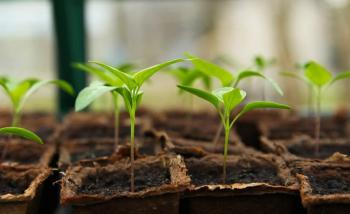Ask a Mentor
Homegrown Science
By Gabe Kraljevic
What different science activities can you have your students (elementary through middle) do at home that do not require many outside resources?
—S., Pennsylvania

Image by J Garget from Pixabay
A multitude of activities can be done with just household materials! I would concentrate on the process of science rather than products or results. Questioning, observing, discussing, concluding, and communicating can be practiced in simple, hands-on activities. The first thing I would suggest is to explore NSTA’s Daily Do and other resources for easy, at-home activities.
Have students record, describe, and reflect on their observations using cameras, journals, or sketchbooks. Some ideas are
Count, identify, and observe behavioral and physical characteristics of plants, trees, insects, and birds. Grow different seeds by placing them on folded, damp paper towels inside zip-top bags.
Experiment with chemical and physical changes by putting nails, screws, paper clips, and other materials in separate zip-top bags with a damp paper towel. Removing stains is an excellent study in solubility and chemical properties.
Design and carry out investigations in energy, inertia, acceleration, and velocity by rolling toy cars down ramps or crashing them. Use simple machines made with craft materials.
Grow crystals using baking materials: sugar, salt, cream of tartar, alum, and so forth.
Kitchen chemistry! Students can try many food-related experiments (with parental consent): Cracker pie, the Maillard reaction, baking powder/baking soda.
Download, print, and assemble a planisphere and/or an astrolabe to make astronomical observations of the Moon, stars, constellations, and planets.
STEAM/STEM projects! Design, build, and test all kinds of DIY inventions. Cardboard, paper, tape, glue, and popsicle sticks are easy materials to acquire.
Hope this helps!

